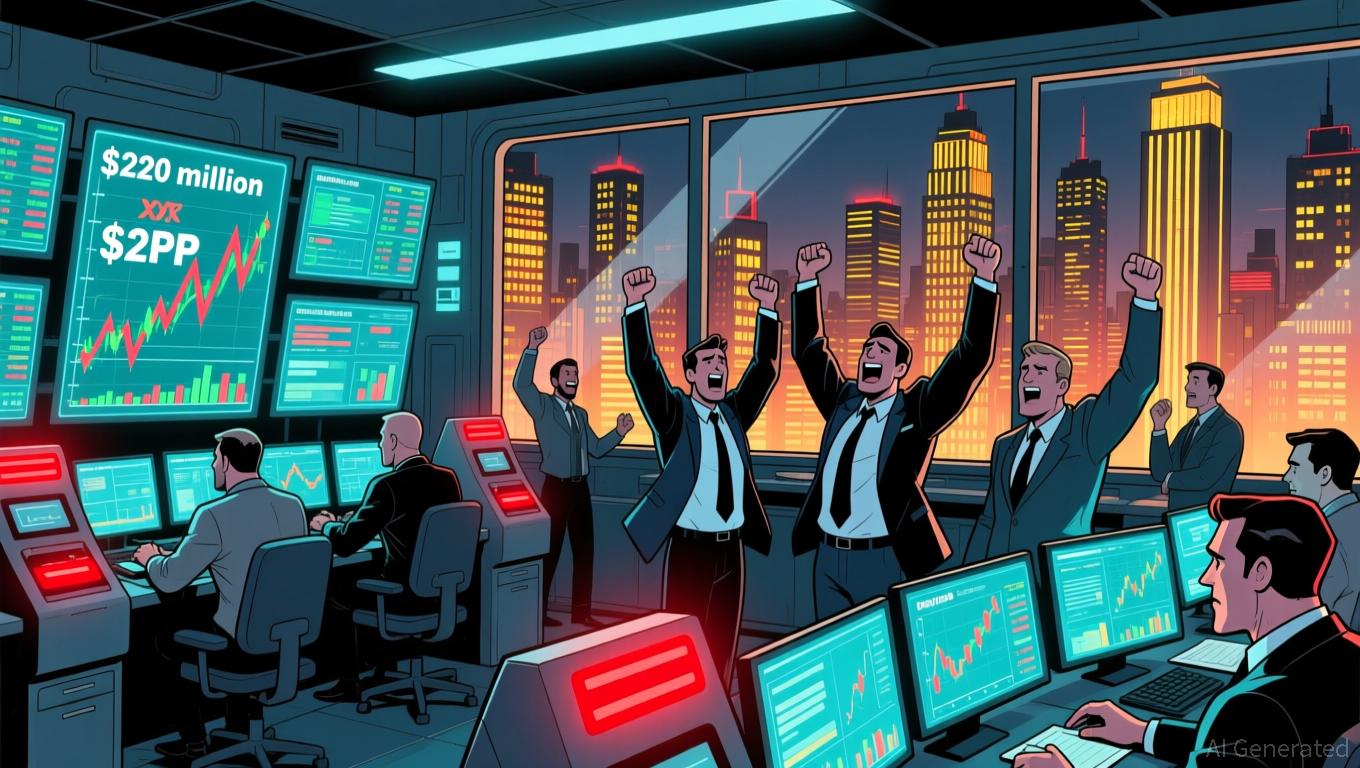U.S. Imposes 100% Tariffs on Pharmaceuticals to Encourage Local Manufacturing, Raising International Trade Worries
- U.S. government imposes 100% tariffs on imported branded/ patented drugs from Oct 1, 2025, unless manufacturers have U.S. production facilities underway. - Policy aims to boost domestic manufacturing via Section 232 national security investigation, as U.S. pharmaceutical imports hit $213B in 2024. - Analysts warn tariffs risk higher drug prices and supply chain disruptions, with Asian markets reacting sharply to potential losses. - Pharma companies show mixed responses: J&J invests $55B in U.S. operation

On September 25, 2025, the U.S. government revealed it would impose a 100% tariff on imported branded and patented pharmaceuticals starting October 1, 2025, unless manufacturers have already begun building production facilities within the United States. This measure, detailed by President Donald Trump on Truth Social, is intended to encourage pharmaceutical companies to manufacture domestically, offering exemptions to those with U.S. sites that are either under construction or have started development. The tariff specifically targets drugs protected by intellectual property rights, while generic medications will not be affected title1 [ 1 ].
This tariff is part of a Section 232 national security review of pharmaceutical imports, a process previously used to levy tariffs on steel and aluminum. According to the U.N. Comtrade Database, U.S. pharmaceutical imports soared to $213 billion in 2024, nearly three times higher than ten years ago. The policy is part of a larger effort to address supply chain risks, with Trump asserting that these tariffs will "bolster American manufacturing and lessen dependence on overseas sources for essential medicines" title1 [ 1 ].
Industry experts and drugmakers have voiced apprehension about the possible fallout. Louise Loo, an analyst at Oxford Economics, cautioned that the tariffs might deliver a "significant financial blow to U.S. consumers," noting that 20% of U.S. pharmaceutical imports come from Asia. She also pointed out exceptions, such as protections for Japan and the European Union under trade agreements, and exemptions for companies actively building U.S. facilities title2 [ 2 ]. Asian stock markets responded quickly, with Japan’s Topix Pharma Index dropping 1.47%, and shares of Daiichi Sankyo and Chugai Pharmaceutical falling by 2.11% and 3.64%, respectively title8 [ 8 ].
Pharmaceutical firms have shown varied reactions. While some, like
There are still major economic and logistical hurdles. Evan Seigerman, an analyst at BMO Capital Markets, argued that moving pharmaceutical manufacturing back to the U.S. is both complicated and expensive, and that global supply chains are unlikely to change rapidly. He expects most companies to postpone significant decisions until after the 2024 election due to uncertainty about the future of Trump’s policies. Meanwhile, analysts like Steve Scala from TD Cowen observed that companies with a strong U.S. manufacturing presence, such as Eli Lilly and
The administration’s approach could have far-reaching effects on global trade and healthcare. The 100% tariff is likely to drive up drug prices, especially for patented medicines, as companies pass on the extra costs to consumers. Drug pricing expert Antonio Ciaccia noted that the combination of Medicaid rebate rules and tariffs could force companies to raise prices even more than usual. This policy is also part of Trump’s broader tariff strategy, which includes 50% duties on kitchen cabinets and 25% on heavy trucks, aiming to protect U.S. industries from being "flooded" by foreign products title4 [ 4 ].
Disclaimer: The content of this article solely reflects the author's opinion and does not represent the platform in any capacity. This article is not intended to serve as a reference for making investment decisions.
You may also like
Stellar News Today: C3.ai Faces AI Challenges While Stellar's Blockchain Thrives: Changing Currents in Technology
- C3.ai faces leadership turmoil, 54% stock drop, and legal claims over misleading growth statements amid $116.8M Q1 2026 net loss. - Stellar (XLM) gains traction with BRL stablecoin partnerships, tokenized energy projects, and 1B+ Q3 2025 transactions boosting institutional adoption. - Stellar's ecosystem expands via 37% developer growth, $562M RWA market, and IBM's integration of its security protocols for tokenized infrastructure. - Contrasting trajectories highlight shifting tech priorities: speculativ

Algorand Moves to Passwordless Security to Address Quantum Risks and Meet Regulatory Requirements
- Algorand launches passwordless login via Pera Wallet using FIDO2 standards to combat quantum threats and regulatory demands. - Industry trends show firms like AMI adopting post-quantum cryptography while Prisma AI develops AI-specific security tools. - Ledger explores NY IPO amid rising crypto storage demand, while BIO-key expands passwordless solutions in Middle East/Africa. - NIST/NCSC urge quantum-resistant algorithm migration, positioning passwordless tech as critical for financial/healthcare complia

Ethereum News Update: Connecting Crypto Enthusiasts and Card Game Fans: Funtico's EV2 Presale Transforms Web3 Entry
- Funtico launches EV2 presale, allocating 40% tokens to early buyers via crypto and credit cards. - EV2 blends sci-fi shooter mechanics with progression-driven gameplay, featuring five character classes and high-fidelity visuals. - Token deployed on Ethereum to leverage DeFi infrastructure, offering TICO bonuses for presale participants. - Flexible payments include ETH, USDT, BTC, and credit cards, incentivizing early adoption. - Phased rollout aims to build community engagement through tournaments and NF

XRP News Update: XRP ETF Approaches Debut While Profit-Taking Challenges $2.35 Support Level
- XRP's price surged 10% to $2.43 amid anticipation for its first spot ETF, with Canary's SEC filing signaling a potential Thursday launch. - Profit-taking by long-term holders spiked 240% since September, pushing daily realizations to $220M as prices retreated to $2.30. - Ripple's $125M SEC settlement and XRP Ledger's 99.999% uptime bolstered fundamentals, while a partnership with Mastercard/Gemini expands cross-border payment integration. - Competition from AI/meme tokens and liquidity shifts threaten XR
